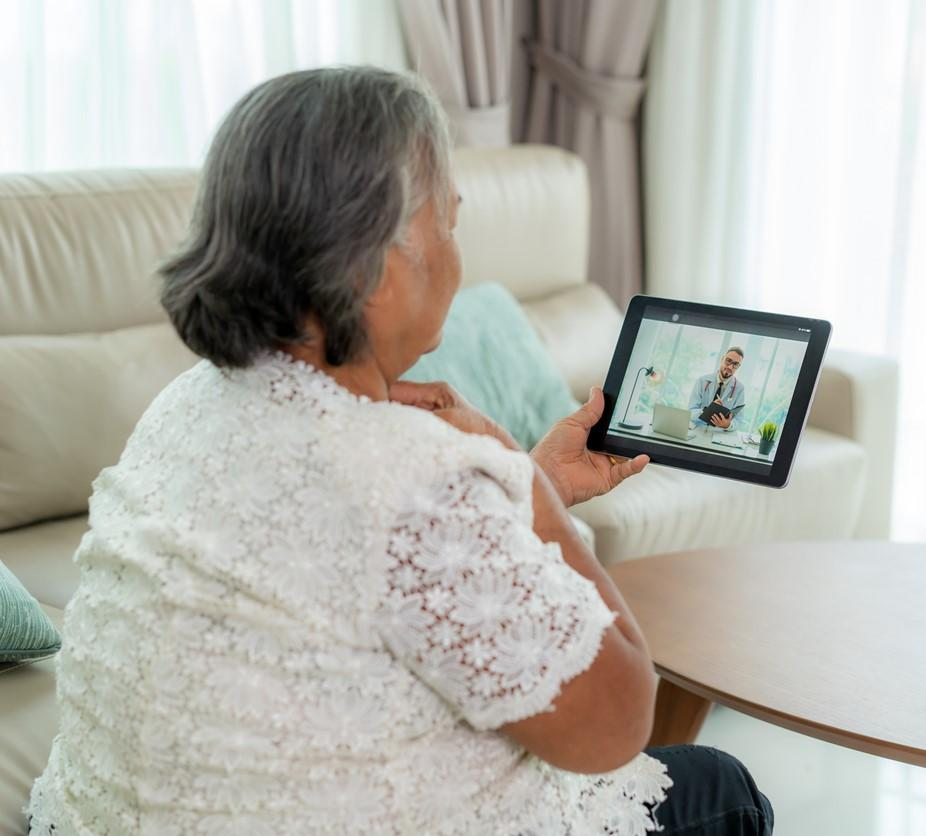A cohort study of Wisconsin Medicaid beneficiaries finds that access to high-speed internet (HSI) didn't reduce disparities in telehealth use during the COVID-19 pandemic, suggesting that telehealth and HSI may increase—but not close gaps in—the uptake of primary care.
The Boston University-led study consisted of a difference-in-differences regression of the change in in-person and telehealth primary care visits of 172,387 adults before the COVID-19 public health emergency (PHE; June 2019 to February 2020) and an initial (March to May 2020) and prolonged (March 2020 to December 2021) period. The data were mined from Wisconsin Medicaid enrollment and claims from December 2018 to December 2021.
The results were published today in JAMA Network Open.
Participants were aged 18 to 64 years, 59.7% were women, 60.2% were White, 19.9% were Black, 8.7% were Hispanic, 66.0% lived in urban counties, and 42.1% had a chronic illness. Most had at least a high school education (59.4%), and an annual income of 50% or less of the federal poverty line (61.1%).
The researchers noted that telehealth use has become increasingly relevant for health equity because it reduces barriers to healthcare such as geography and transportation issues. Yet over 25% of Americans—many of whom have annual incomes of less than $30,000—don't have broadband at home.
"Telehealth could thus close a variety of utilization gaps associated with socioeconomic status (SES), race, rurality, and age," they wrote. "However, telehealth requires equipment, internet, and digital literacy," which could exacerbate health disparities.
Access to HSI
In total, 82.6% of participants had access to HSI. The average number of pre-PHE monthly primary care visits was 0.14. In this period, women had more visits than men, as did White versus Black patients, urban versus rural residents, those with HSI versus those with low-speed internet (LSI), and those with underlying illnesses versus those without.
When the PHE began, total and in-person primary care visits dropped as telehealth visits rose dramatically. Telehealth visits peaked in April 2020, at over 50% of visits. This proportion gradually fell and leveled off at about 8% in late 2021. Total visits stayed under the pre-PHE number throughout 2021.
During the initial PHE period, relative to men, women had a greater rise in telehealth visits (43.1%), visit share (2.20 percentage point difference [PPD]), and PHE-induced visit decline offset by telehealth (6.81 PPD).
Black patients had a greater increase in share (5.44 PPD) and offset (15.22 PPD) than their White counterparts, and Hispanic participants had a greater rise in telehealth visits (35.60%), share (8.50 PPD), and offset (12.93 PPD) than White participants. Telehealth use among urban residents rose more than among rural residents (63.87%), as did share (9.13 PPD) and offset (13.31 PPD).
Participants who had HSI had a greater increase in telehealth usage than those with LSI (55.23%), share (6.61 PPD), and offset (6.82 PPD). Those with underlying diseases had a greater increase in telehealth use (188.07%), share (4.50 PPD), and offset (9.03 PPD) than those without. Prolonged PHE differences were comparable, and they weren't mitigated among those who had HSI.
Telehealth 'unlikely' to close gaps in use
HSI increased the telehealth advantage for women and urban residents in the initial PHE period, but stratification limited the advantage of Black and Hispanic participants to those who had HSI. Similarly, better-educated participants, who completed higher visits pre-PHE showed a smaller increase in telehealth share and offset than less-educated people only among those who had HSI.
In the cases of age, sex, and geography, variation in telehealth uptake paralleled preexisting utilization trends suggesting that telehealth expansion is unlikely to close utilization gap.
Compared with the lowest-income participants, those with moderate incomes showed an 8.0% smaller increase in the prolonged PHE period, while the highest-income group had a 9.5% smaller increase during the initial PHE period and a 18.9% smaller rise in the prolonged PHE period. The moderate- and highest-income groups also had a smaller increase in telehealth share than those with the lowest incomes. No differences were seen in telehealth offset by income.
"In the cases of age, sex, and geography, variation in telehealth uptake paralleled preexisting utilization trends suggesting that telehealth expansion is unlikely to close utilization gaps," the researchers wrote. "In contrast, telehealth may offer a minor advantage in closing utilization gaps by race and education and may strengthen the utilization advantage among individuals with the lowest incomes."
They said that while telehealth expansion has been proposed as a way to expand healthcare access, "leveraging telehealth to improve access for underserved populations will require more nuanced attention to the specific mechanisms linking telehealth and health care utilization to avoid inadvertently deepening disparities for select populations."




















